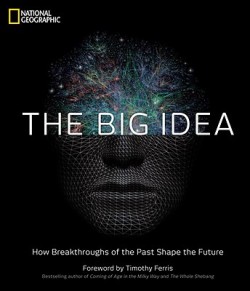Some of my favorite book reviews come from Boing Boing, a tech-focused culture blog that you’ve probably already heard of and that I’ll sound like an idiot if I try to explain any further. It’s a wonderful online hub for news and commentary, featuring contributors that write intelligently and passionately about a wide range of subjects. One of those subjects, from time to time, is books and, as I should’ve expected, their book reviews are as intelligent and passionate as the rest of the blog.
Last week, Maggie Koerth-Baker, penned a great review of a new National Geographic coffee table book called The Big Idea: How Breakthroughs of the Past Shape the Future, and there was a passage in her review about the impact that coffee table books can have on kids that I absolutely adore. She wrote:
I still think kids and coffee table books go together like peanut butter and jelly. In late grade school and junior high, you’re at an age where you still enjoy picture books but are looking for a bigger, deeper view of the world than most picture books provide. Coffee table books bridge that gap, offering grown-up perspectives in kid-friendly packages. Whether the topic is art, architecture, history, culture, or science—coffee table books can be a kid’s first step into a subject they’ll come to love as an adult.
I could NOT agree with Maggie more, and I totally heart her for describing something that I rant about every few months in way more eloquent terms than I ever could.
OK, this blog is all about giving advice about building a home library, right? So, here is one of my top five favorite pieces of advice to give parents who are trying to put together a collection of books for their children: Make sure that your kid – whether they’re 2 or 12 years old – has access to a big variety of coffee table books. [read the rest of the post…]
{ 0 comments }

